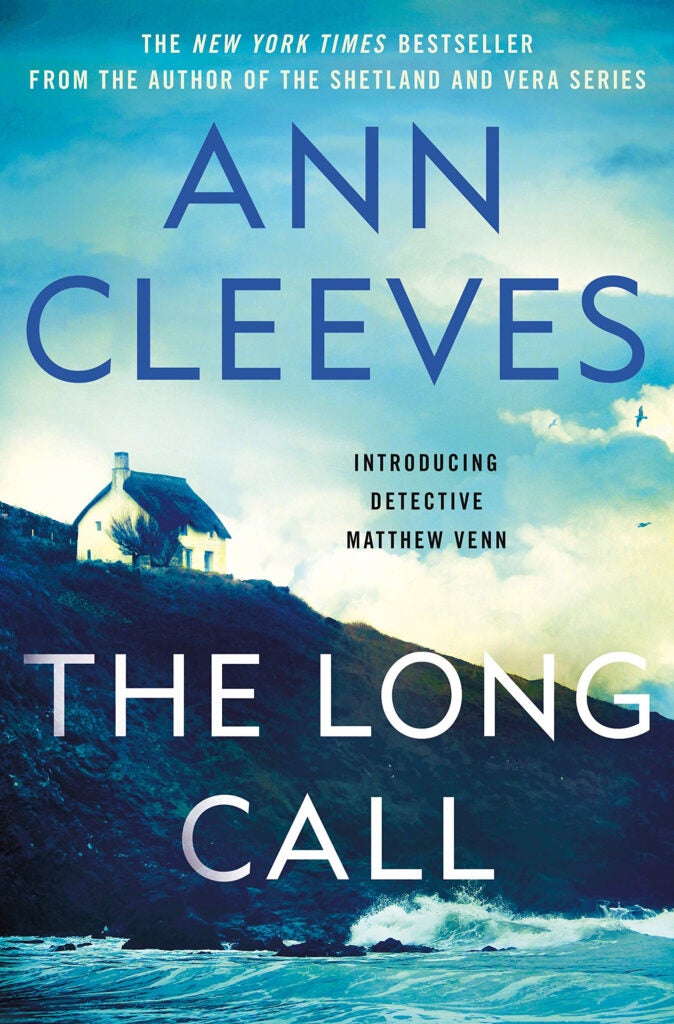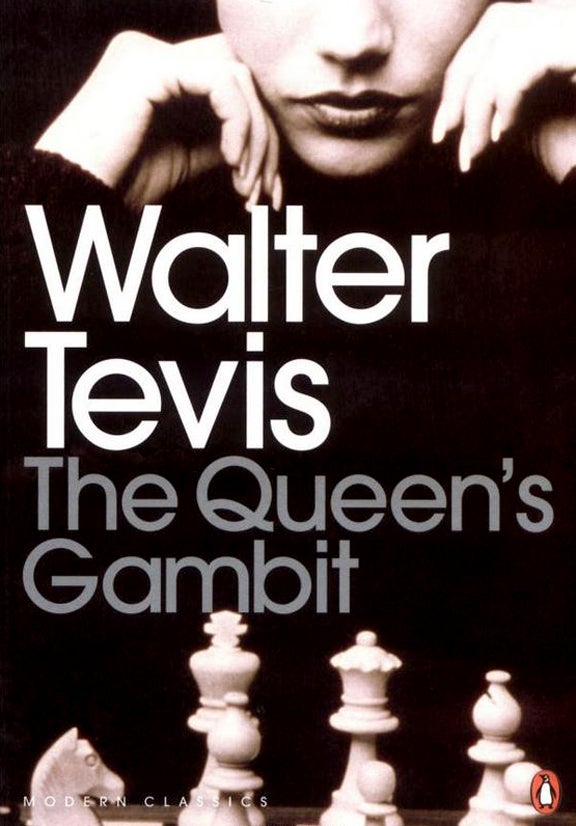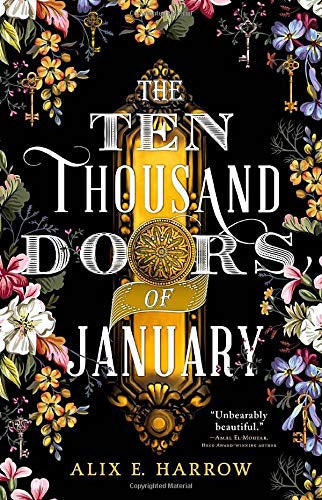“The Ten Thousand Doors of January” by Alix E. Harrow
“The Ten Thousand Doors of January” is the debut novel by award-winning Kentucky author Alix E. Harrow. At the surface, this historical fantasy is the coming of age story of young January Scaller, a motherless girl with a perpetually absent father.
January is the ward of the wealthy and powerful Cornelius Locke, head of the New England Archaeological Society and employer of her father, Julian Scaller, who travels the world as a field agent searching for artifacts to add to Locke’s extensive collection. Brought up in Locke’s Vermont mansion, January leads a privileged life, but always sees herself as “in-between,” never quite belonging. She longs for an escape, which she only finds in stories.
The wheels of change are set in motion when, at the age of seven, while on a business trip to Kentucky with Mr. Locke, January discovers her first door. Dismissed by Locke as merely nonsense, they return home to Vermont where she resumes her role as the dutiful ward, only now with the notion that there may be something more.
However, she will not learn the truth about these doors until 10 years later when she finds a book written by her father. Titled “The Ten Thousand Doors,” the book appears to be a chronicle of her father’s travels and research, most notably secret doors that serve as portals to other worlds, but also the story of a mysterious woman named Adelaide Lee Larson. January soon realizes that this book may be the key to her past and her future.
January sets off on a journey to find her father that will not only introduce her to new physical worlds, but also her true self and the power she has stifled for so long, namely the ability to write her own story (sometimes literally) and control her destiny. It is a book within a book, complete with footnotes you will not want to skip, and the two stories weave together as the novel progresses.
Even if you are not ordinarily a fantasy reader, do not pass this up. January’s adventure — though full of fantastical elements — also includes strong themes of family, friendship, a bit of romance and one good dog. The narrative also incorporates issues of race, class and gender that are still very much relevant in our own time.
Harrow’s enchanting prose and vivid imagery make you feel like you are experiencing the action right alongside January. This book is a must-read for anyone who believes in the power of storytelling and the magic of the written word.
If you enjoy this title, check out Harrow’s second novel, “The Once and Future Witches,” released in October.
— Review by Diane Dehoney, Community Service Librarian, Paul Sawyier Public Library

“The Long Call” by Ann Cleeves
Ann Cleeves, veteran mystery writer, has delivered a first in a new series, “Two Rivers.” The author of the popular Vera Stanhope and Shetland Island mystery series, introduces the reader to DI Matthew Venn, DS Jen Rafferty and DC Ross May. As the novel opens, Detective Venn is attending his father’s funeral, but standing outside because years ago he left the church he was brought up in.
As he walks away, he receives a call to investigate the stabbing death of Simon Walden who is found on the beach close to the home Venn shares with his husband Jonathan.
The investigation turns complicated when it is discovered that the deceased man had ties to Jonathan’s workplace and that some of the staff there have ties to Matthew’s former church. As Venn and his team follow the leads that emerge from the investigation, his estranged mother asks for his help in locating a missing woman.
The mystery of the death of Simon Walden, the missing woman and the reason for Venn not attending his father’s funeral will keep you guessing until the end.
“The Long Call” will appeal to those who enjoy a character driven mystery. This well-written police procedural tackles some tough social issues. Recommended.
— Review by Paul Sawyier Public Library Staff

“The Queen’s Gambit” by Walter Tevis
Readers are often asked “have you ever bought a book because of the cover?” Will Barnet did the original cover art for this title — a black and white image of a young girl in red playing chess. “The Queen’s Gambit” was released in 1983.
That same year, Walter Tevis came to a Frankfort Arts Foundation Literary event at the Investors Heritage Auditorium. The series was sponsored by Henry Leadingham, a local optometrist. Tevis read from two works, one of which was from “The Queen’s Gambit.”
I had my copy of Gambit signed, and I treasure it as one of my top 10 favorites. Tevis was introduced as the author of “The Hustler,” “The Color of Money” and “The Man Who Fell to Earth.” All of those titles were reinvented into successful films with stars such as Paul Newman and David Bowie.
“The Gambit” begins with an auto accident on New Circle Road in Lexington that leaves 8-year-old Beth Harmon, an orphan. She is placed in a Mt. Sterling orphanage where the standard care in the late 1950s was to medicate the children to help manage behavior issues.
Beth is a loner, different from the others. Making friends isn’t as easy for her, but she aces her school work. She completes assignments early and is allowed to clean the erasers in the basement. There, she watches Mr. Shaibel, the boiler man, play chess and asks him to teach her.
Within the 28 squares of the board, Beth has the experience of controlling her world. She advances quickly and the drugs help her visualize the board and all the possible moves of the chessmen.
Strangely, when Tevis’ parents moved to Kentucky, they left him in an orphanage in California for a year. He knew the state of orphans from that experience.
Netflix has recently presented a multi-part series of “The Queen’s Gambit.” The special effects in the film add to the print presentation in the book. But you will miss out on first rate storytelling if you skip the book, which has lots of Kentucky details.
And, if you’re unable to understand the game of chess, it’s not a problem. All you need to know is Beth is a chess genius chasing off her demons while uncovering her passion.
— Review by Lizz Taylor, Poor Richard’s Books

“Cheer Ami and Major Whittlesey” by Kathleen Rooney
Kathleen Rooney, an English professor at DePaul University, read a poem by one of her students who referenced Cher Ami — and she had to “look it up.”
She found Cher Ami in the collection of the Smithsonian Museum perched inside a glass display. This British born homing pigeon was significant, as she was used to carry messages from besieged troops to headquarters during the first World War.
Cher Ami becomes one of the narrators telling of the historic event known as the Meuse-Argonne Offensive, when the pigeon saves the lives of the “Lost Battalion.”
The other narrator is Major Charles Wittlesey, the commander of the soldiers trapped behind enemy lines and suffering from unrelenting “friendly fire.” Rooney describes the unique training for each of these participants. Possibly, the pigeon had more training for battle, as Whittlesey had been a lawyer in prewar days.
Rooney speculates that in the training, Cher Ami experiences exhilaration when she returns home. Whereas, Charles was not confident at all about his ability to “keep everybody’s spirits up,” and returning home brought new hardships.
Rooney relates the story from inside the foxholes of the battlefield, and also from the skies above. For every turn in Whittlesey’s battle description, there is “bird’s eye view” from Cher Ami. She flew through gun fire to deliver Charles’ message of “For heaven’s sake, stop it!” to the Americans.
It cost her dearly. She lost an eye and a leg. The army thought her so important that they made her a wooden prothesis and she was able to hobble around.
Charles also survived the event but experienced PTSD at a time when little was known about helping the survivors after battle. Rooney comments that “war breaks people.”
This story will make you think about the many contributions animals make to mankind.
If you enjoy birds and have only known the pigeons in the park, read about Cher Ami and the joys of flight and service to one’s country.
— Review by Lizz Taylor, Poor Richard’s Books










